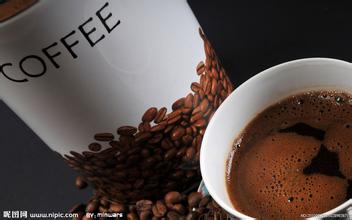Introduction to the characteristics of Coffee Grinding degree in San Pedro Manor, Puerto Rico
Puerto Rico has a history of producing coffee for nearly 300 years and was once one of the most productive regions in the world. According to the Starbucks website, Spanish explorers brought coffee from Louis XIV plantations in France to the island in 1736. The fame of Yaucono Selecto is once indistinguishable from that of Kona in Hawaii and Blue Mountain in Jamaica. It is also a favorite of European palaces and the Vatican. Until the 19th century, it was the only cafe in Vienna, Paris and Madrid.
But today, outside the island, Puerto Rican coffee is rarely seen or heard of, and even its major shareholder Coca-Cola is not actively promoting it. Instead, coffee from Puerto Rico and Colombia, Brazil, Mexico, Costa Rica and the Dominican Republic is mixed and roasted without specifying its origin.
What is the reason for the decline of coffee in Puerto Rico?
Puerto Rico has been in the news lately because its government, which has been saddled with $70 billion in debt for years, officially defaulted in August. Its embarrassing situation originated from the Spanish-American War in 1898, when Spain surrendered Puerto Rico to the United States, making it a commonwealth of the United States in the Caribbean. Unlike the 50 local states, some federal benefits are not available to it, but rules and regulations must be observed. Puerto Rico has had four referendums, the last in 2012, when 61% of its citizens approved it as the 51st state in the United States, but waiting for Congress to pass is a long way off. The state government is so unable to be protected by the bankruptcy law after default that it is jokingly called the Greece of the United States because their financial situation is similar to their political relations with the United States and the European Union.
The decline of Puerto Rico's coffee industry has a lot to do with its awkward economic and political situation. During the Spanish-American War, the United States had established a strong and lasting coffee trade agreement with Brazil, a coffee giant, and did not give too much thought to Puerto Rico, which had just been successful. Moreover, the economic purpose of the United States in the Caribbean is mainly focused on the sugar industry, which has made the local sugar cane production so booming that small-scale coffee retail investors have no way to fight, and coffee manufacturers who can survive have to merge again and again to retain their strength. It is said that the quality of local varieties has also been affected.
Nowadays, Puerto Rico's coffee is not even enough for domestic demand, and it still needs to import raw beans from other places for baking, so we don't know how much of the coffee we snapped up was picked on the island.
But the shortage of coffee on the island is not entirely due to the decline in production. Because of the closer relationship with the United States, few local people are willing to engage in the coffee-picking business. According to records, 1/4 of the coffee on the trees is wasted every year because it is not picked, because coffee farmers go to work in the United States. Those who stay, because of the minimum wage law, government subsidies, and other social welfare reasons, are also unwilling to do the work of bending over the slopes all day in the scorching sun. According to the latest statistics, today the population of the island is about 3.9 million, while the population of Puerto Rico in the United States reaches 4.2 million. No wonder the state government has recently been weighing the use of prisoners to pick coffee beans. It's just that no one knows how effective the work of these prisoners who prefer to stay in air-conditioned cells is.
Puerto Rico has the highest per capita GDP compared with Latin America as a whole, but it is lower than Mississippi, the poorest state, with 41 per cent of people living below the poverty line. But if it imports labor from other regions, it needs to pay a minimum federal wage and minimum health insurance, as well as stricter environmental policies. In this way, it loses its competitiveness compared with the surrounding Dominica, Jamaica, Cuba and other countries.
Puerto Rico is located in the Caribbean, picturesque, perennial climate, beaches, monuments, forests, but also suitable for the growth of high-quality coffee soil and Rain Water, unique natural conditions. Because within the territory of the United States, domestic tourists, including foreigners in the United States, do not need to apply for passports and visas, and there is no language barrier. Originally, these are its strengths, tourism and coffee economy should be booming. However, the former coffee kingdom has not only lost its halo, but also its government finances are in jeopardy. There are many reasons, and its awkward position in American geopolitics and economy may have something to do with it.
As a result, I think of the vast land of the East, strong young people, driven by life, left home, prosperous northward, but desolated the local hometown, forgotten a large number of left-behind children. Is this the only way to make some people rich first?
Also thinking of living in Hawaii, which is also picturesque but expensive, there are very few local families who do not rely on second or third jobs to make ends meet. How many tourists who come and leave in a hurry will realize the price paid by those who live in "heaven"?

Important Notice :
前街咖啡 FrontStreet Coffee has moved to new addredd:
FrontStreet Coffee Address: 315,Donghua East Road,GuangZhou
Tel:020 38364473
- Prev

Flavor description treatment of Hassanda Coffee Garden in Ecuador introduction to the planting environment of varieties in the area of taste
The Ecuadorian national flag is rectangular, with a ratio of length to width at 2:1. The flag is made up of three rectangles connected by yellow, blue and red. Yellow occupies 1 quarter of the flag, while red and blue each account for 4. The national emblem is painted in the central government. Yellow symbolizes the wealth, sunshine and food of the country; blue symbolizes the blue sky, the sea and the magnificent Amazon; red symbolizes the blood of the patriots fighting for freedom and justice, Ecuador's national emblem Ecuador Guado.
- Next

Description of Coffee Flavor in Manor Atlanta, Jamaica. Introduction to the characteristics of grindability, taste and price of varieties.
Blue Mountain Coffee is the most superior coffee in the world, and the weather, geological structure and topography of Jamaica provide an ideal place. The ridge that runs through Jamaica extends to the eastern part of the island, with the Blue Mountains rising to more than 2100 meters. Cool weather, foggy, frequent precipitation, use this rich soil Rain Water to reconcile. Here, the mixed planting method is used to plant coffee trees to make them mix with incense in terraces.
Related
- Does Rose Summer choose Blue, Green or Red? Detailed explanation of Rose Summer Coffee plots and Classification in Panamanian Jade Manor
- What is the difference between the origin, producing area, processing plant, cooperative and manor of coffee beans?
- How fine does the espresso powder fit? how to grind the espresso?
- Sca coffee roasting degree color card coffee roasting degree 8 roasting color values what do you mean?
- The practice of lattes: how to make lattes at home
- Introduction to Indonesian Fine Coffee beans-- Java Coffee producing area of Indonesian Arabica Coffee
- How much will the flavor of light and medium roasted rose summer be expressed? What baking level is rose summer suitable for?
- Introduction to the characteristics of washing, sun-drying or wet-planing coffee commonly used in Mantenin, Indonesia
- Price characteristics of Arabica Coffee Bean Starbucks introduction to Manning Coffee Bean Taste producing area Variety Manor
- What is the authentic Yega flavor? What are the flavor characteristics of the really excellent Yejasuffi coffee beans?

